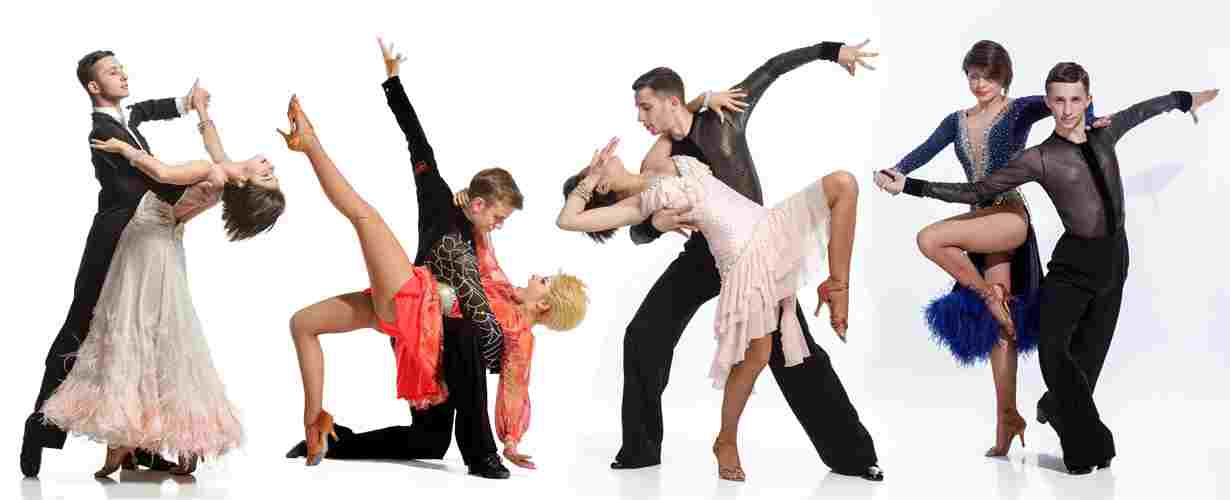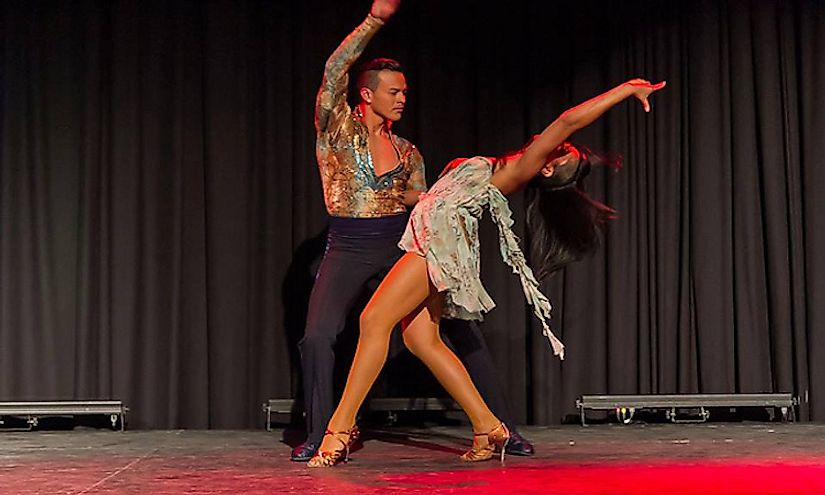Top Guidelines Of Dance San Francisco
The Dance San Francisco Statements
Table of ContentsThe Facts About Dance San Francisco UncoveredWhat Does Dance San Francisco Mean?Dance San Francisco for BeginnersNot known Facts About Dance San FranciscoSome Known Details About Dance San Francisco Some Of Dance San FranciscoThe 10-Minute Rule for Dance San Francisco
The major distinction that distinguishes the Miami-style from various other North American styles is the "Atras" or "Angled", back breaking steps executed backwards diagonally rather of moving forwards and in reverse as seen in the New York design. Dancers do not shift their body weight greatly as seen in various other styles. bay area salsa dancing. Rather, dancers keep their top body still, poised and relaxed, concentrating on foot activityA significant distinction between Cali Design and Miami-style is the latter is specifically danced on the downbeat (On1) and has aspects of shines and show-style included in it, following collections of North American designs. Miami-style has numerous followers, particularly Cuban-Americans and various other Latinos based in South Florida. In the 1950s, Salsa Rueda or a lot more precisely Rueda de Casino was established in Havana, Cuba.
Most of the relocations include swiftly swapping partners. "Rueda de Cuba" is original kind of Rueda, stemming from Cuba. It is not as formal as Rueda de Miami and includes regarding 30 phone calls. [] It was codified in the 1970s. [] "Rueda de Miami" originated in the 1980s from Miami, is a formal style with several rules based on a mix, and is a hybridization of Rueda de Cuba & North American dance styles, with some routines showing American society (e.
The 8-Minute Rule for Dance San Francisco
Coca-Cola, Dedo, Adios) which is not located in the traditional Cuban-style Rueda - bay area salsa dancing. Cali-Style Salsa, also called Colombian Salsa and Salsa Calea, is based around the Colombian City of Cali. Cali is also known as the "Capital de la Salsa" (Salsa's Funding); as a result of salsa music being the main genre in parties, bars and celebrations in the 21st century.
The elements of Cali-Style Salsa were highly influenced by dancings to Caribbean rhythms which preceded salsa, such as Pachanga and Boogaloo. Cali has the greatest number of salsa colleges and salsa teams in the globe. A lot of the competitions are kept in Colombia. The central attribute is the footwork which has fast rapid steps and avoiding motions called "repique".
Rumored Buzz on Dance San Francisco
They include different acrobats such as partnered turns to delight with these jaw dropping stunts. Their footwork is detailed and precise, helping several Colombian Style professional dancers win major world championships. Cali hosts several annual salsa events such as the World Salsa Cali Event and the Encuentro de Melomanos y Coleccionistas.
For example, researchers in the natural scientific researches researched the math of salsa dance moves. In the social sciences, researchers have studied salsa dancing to understand, for example how the Latino identity is linked to salsa dancing. The research study of salsa dancing has been examined as a metaphor to understand emotional and social economies.
and, researchers have likewise utilized salsa dance to examine the ephemerality of social teams. Salsa songs the songs to which salsa is danced Mambo a dance style which greatly affected salsa dance Palladium Ballroom a New York City location that helped promote Latin music and Get More Info dancing during the 1940s and 1950s Rhumba a ballroom dance that greatly affected salsa World Salsa Championships a list of international competitors for salsa dancing Cuban salsa a preferred type of salsa dance from Cuba Boggs, Vernon (1992 ).
The Only Guide for Dance San Francisco
ISBN 0-313-28468-7. OCLC 24908952. Hutchinson, Sydney (2004 ). " Mambo on 2: The birth of a brand-new type of dancing in New york city City" (PDF). Centro Journal. 16: 108137. ISSN 1538-6279. " What Is Salsa (Dance)?". 2023-03-13. Retrieved 2023-05-26. Young, Takeshi (26 June 2023). " Latin Dancing". Salsa Vida. Fetched 5 October 2023. " Developing salsa".
Fetched 5 October 2023. " Background of Salsa Dancing". Salsa Vida. 26 June 2023. Retrieved 5 October 2023. Ludovic, Kiss Mihai (2015-10-01). " Salsa Origins and Development". Sport i Societate. 15 (Special): 120129. ISSN 1582-2168. Djebbari, Elina (2020-01-02). " Dancing salsa in Benin: Linking the Creole Atlantic". Atlantic Researches. 17 (1 ): 110134. doi:10.
Salsa Vida. Movers and Shakers Salsa & Bachata Dancing Academy. Spinning Mambo Into Salsa.
Recovered 2019-06-26. Waxer, Lise Aerinne (2002 ). The city of musical memory: salsa, document grooves, and prominent society in Cali, Colombia. Music/culture. Middletown, Conn: Wesleyan University Press. ISBN 978-0-8195-6441-2. " Colombian Design Salsa". Salsa Vida SF. Recovered 27 July 2020. von Renesse, Christine; Ecke, Volker (2011-03-01). " Mathematics and Salsa dance". Journal of Mathematics and the Arts.

See This Report on Dance San Francisco
9 (2 ): 113125. doi:10. 1002/cb. 308. Holmqvist, Jonas; Diaz Ruiz, Carlos; Pealoza, Lisa (2020-08-01). " Minutes of high-end: Hedonic avoidance as a high-end experience". Journal of Company Research. 116: 503513. doi:. ISSN 0148-2963. S2CID 211427257. Diaz Ruiz, Carlos A.; Penaloza, Lisa; Holmqvist, Jonas (2020-01-01). " Constructing people: An assemblage assuming method to the dynamics of ephemerality within customer tribes".

Something failed. Wait a minute and attempt once again Try once more.
Dance San Francisco for Dummies
We're speaking about the dance, not the delicious South American condiment. The beginnings of words "Salsa" as the name of a dance has been a source of debate for years. One of the most prominent (and potentially approved) theory is that Cuban and Puerto Rican musicians in New york city created the phrase in New York in the 1970's, to define the spicy fusion of music they were creating out of the rhythms and motifs of Cuban child montuno, guaracha, chachacha, mambo and bolero.